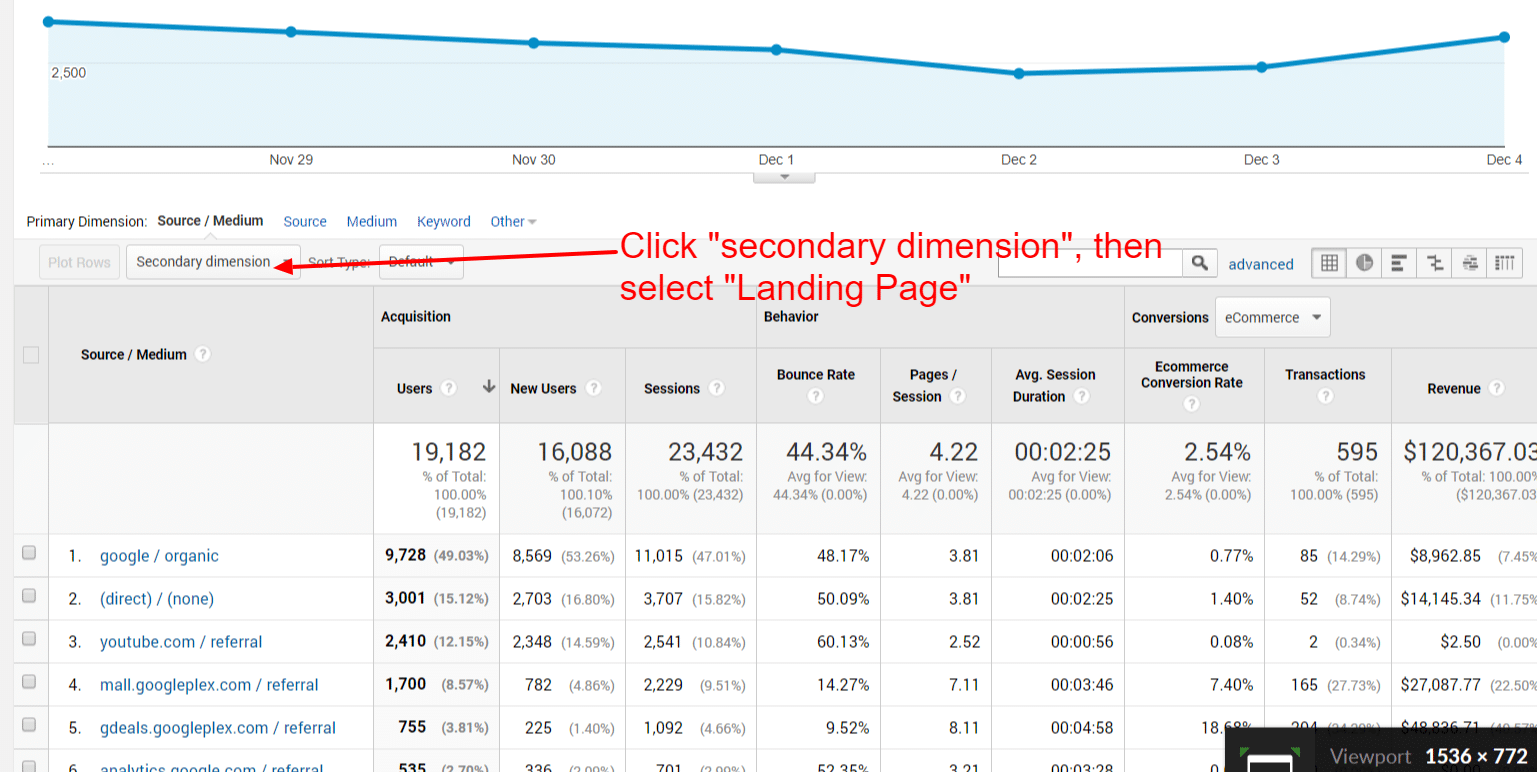Maximize Your Coverage with Secondary Dimension in Google Analytics
Maximize Your Coverage with Secondary Dimension in Google Analytics
Blog Article
Maximize Reporting Accuracy With Second Measurement in Google Analytics
Understanding just how to make the most of reporting precision with secondary measurements in Google Analytics can considerably enhance the deepness of insights acquired from data evaluation. By integrating second measurements tactically, marketers can discover concealed patterns and connections that might not be immediately obvious when assessing main metrics alone.
Understanding Additional Dimensions in Google Analytics
Additional dimensions allow customers to section and better dissect data past the main dimension selected. While the main measurement might show the overall number of page sights, including an additional measurement such as 'source/medium' can give understandings into where the web traffic stemmed from.
Additionally, comprehending secondary measurements is important for developing much more customized reports tailored to details company objectives. By choosing the right combination of additional and key measurements, analysts can uncover patterns, trends, and relationships that may otherwise remain hidden. This nuanced strategy to information evaluation encourages companies to make enlightened choices based on a comprehensive understanding of user behavior throughout numerous measurements.

Exactly How to Apply Second Measurements
When leveraging secondary measurements in Google Analytics, the sensible application entails choosing specific information criteria to further improve insights beyond the primary dimension's range. To apply secondary dimensions successfully, start by accessing the report or dataset where you desire to delve deeper right into the data. Bear in mind that secondary dimensions aid give context and granularity to your main measurement data, enabling you to remove even more workable and purposeful insights from your Google Analytics records.
Leveraging Second Dimensions for Insights
Using secondary measurements in Google Analytics allows for a more extensive analysis of information, providing valuable understandings past the key dimension's range. By leveraging secondary measurements, users can dive much deeper into the performance metrics of their web site or application, uncovering concealed patterns and trends that may not be quickly noticeable when just checking out primary dimensions.
One key benefit of utilizing additional measurements is the capacity to section and filter data much more exactly. This can aid analysts and marketing professionals better comprehend the actions of particular customer segments, such as new site visitors versus returning visitors, or web traffic originating from different geographical areas.
Moreover, additional measurements allow customers to compare and comparison various information points within the very same record, supplying an extra alternative view of efficiency (Secondary Dimension in Google Analytics). For example, pairing the main dimension of touchdown web pages with second measurements like tools or demographics can expose which pages are most reliable in involving customers on various devices or from various demographic teams.
Fundamentally, leveraging second dimensions in Google Analytics empowers customers to remove richer understandings from their information, bring about more educated decision-making and eventually, improved performance.
Finest Practices for Additional Dimensions
When assessing information in Google Analytics, including secondary dimensions properly boosts the deepness of insights originated from the primary metrics. To make the most out of second measurements, it is important to comply with best techniques that make sure significant and precise reporting. Firstly, it is essential to choose secondary measurements that align with the primary metric you are examining. Picking pertinent additional dimensions aids in offering context and a more clear understanding of the data being taken a look at.
Additionally, it is advised to limit the number of second measurements used in a single record to prevent overwhelming the evaluation with excessive information. Concentrating on a few vital secondary dimensions at a time can result in even more concentrated and actionable understandings. In addition, consider trying out different mixes of primary and secondary dimensions to reveal one-of-a-kind fads and patterns that might not be apparent when checking out the information in seclusion.
Advanced Evaluation Techniques With Secondary Dimensions
Exploring detailed information relationships through the tactical application of second dimensions can reveal nuanced insights that boost the deepness of evaluation in Google Analytics. By incorporating additional dimensions with primary information sets, advanced evaluation strategies can be utilized to extract valuable details.
In addition, second dimensions can enhance the evaluation of conversion courses by giving additional context. Comprehending the different touchpoints a customer communicates with before transforming can be essential in read what he said optimizing the client trip - Secondary Dimension in Google Analytics. By making use of secondary measurements to dive into specifics such as traffic sources or gadgets made use of, marketing professionals can tailor approaches to target high-converting channels efficiently
Verdict

To boost information analysis and gain much deeper understandings right into user behavior, recognizing secondary measurements in Google Analytics is critical - Secondary Dimension in Google Analytics. Secondary dimensions permit users to segment and additionally dissect data past the primary measurement picked. While the key dimension might display the complete number of page sights, adding an additional measurement such as 'source/medium' can supply understandings into where the website traffic stemmed from.When leveraging second dimensions in Google Analytics, the practical application includes choosing details data parameters to further refine insights beyond the main dimension's extent. click over here now Remember that secondary dimensions assist supply context and granularity to your main Source measurement information, enabling you to draw out more purposeful and workable understandings from your Google Analytics records
Report this page